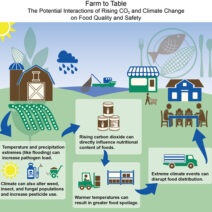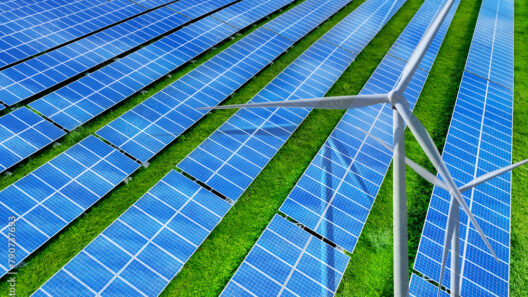As climate change continues to be one of the most pressing challenges of our time, conserving energy in our daily lives not only helps alleviate pressure on our planet but also reduces utility bills. Would you be willing to take on a personal challenge—adopting small yet effective strategies to conserve energy? It sounds daunting, yet these actions can be seamlessly integrated into your daily routines. Here’s how you can make a significant impact.
1. Embrace Energy-Efficient Appliances
One of the foremost strategies for energy conservation is investing in energy-efficient appliances. Devices that carry the Energy Star label consume less energy without compromising performance. From refrigerators to washing machines, these appliances are designed with innovative technology that minimizes electricity usage. When replacing older appliances, consider not only the initial cost but also the long-term savings on utility bills and their reduced environmental impact.
2. Optimize Heating and Cooling
Temperature regulation is a significant contributor to energy consumption in homes. To optimize heating and cooling, adjust your thermostat by a few degrees. In winter, aim for 68°F while you’re home and awake, and lower it when you’re asleep or away. In summer, setting it a few degrees higher can equate to significant energy savings.
Additionally, utilizing ceiling fans to circulate air can enhance comfort without overreliance on HVAC systems. Remember to regularly service these systems to ensure they operate efficiently. A clean filter can enhance airflow and reduce strain on the unit, resulting in substantial energy savings.
3. Practice Mindful Lighting
Lighting is another area where energy can be conserved with mindful practices. Switch to LED bulbs which use a fraction of the energy compared to traditional incandescent bulbs. These bulbs also have a longer lifespan, further reinforcing their cost-effectiveness.
Furthermore, take advantage of natural light. Open curtains and blinds during the day to illuminate your space organically. Consider adjusting your space layout to optimize the flow of sunlight. You might discover you can work and relax in an environment lit by nature instead of artificial sources!
4. Unplugging: The Phantom Load
Did you know that many electronic devices continue to draw power even when they are turned off? This phenomenon, often referred to as “phantom load,” can account for 10% of your home’s energy use. To combat this, unplug devices such as chargers and computers when not in use. Investing in smart power strips can be quite beneficial; these strips can automatically cut off power to devices when not actively in use. This simple act can significantly diminish your energy consumption.
5. Adopt Smart Power Management
In addition to unplugging, managing how and when you utilize energy can lead to greater conservation. Time-of-use electricity rates may encourage you to run your energy-intensive appliances during off-peak hours, usually at night. When laundry day comes, try to do it all at once rather than spreading it throughout the week. Using cold water for washing clothes consumes significantly less energy compared to warm or hot water.
6. Water Conservation Techniques
Water heating can be one of the largest energy consumers in a household. By adopting simple water conservation techniques, you can reduce the amount of hot water used and subsequently lower heating costs. Consider taking shorter showers and installing low-flow showerheads. Dual-flush toilets can also reduce the amount of water used per flush. Furthermore, insulate your water heater and pipes to retain heat efficiently, minimizing the energy required to maintain water temperature.
7. Incorporate Renewable Energy Sources
Consider integrating renewable sources of energy into your home’s energy portfolio. Solar panels, while initially costly, can offer long-term energy savings and independence from fossil fuels. There are often tax incentives and rebates available, making this investment more accessible. Even utilizing solar chargers for small gadgets can be an effective step toward energy conservation.
8. Engage in Energy-Conscious Habits
Building energy-savvy habits can lead to significant behavioral changes over time. Turn off lights when exiting a room; it’s a simple yet impactful measure. Also, encourage family members to do the same. Create a culture of energy awareness, and you might find collective action yields greater results. Engage in community discussions about sustainable practices and share what you learn with others.
9. Temporal Efficiency in Cooking
Cooking is another substantial energy consumer in homes. Utilize pressure cookers, slow cookers, or microwaves which typically use less energy than traditional ovens. When using the oven, avoid opening the door frequently as this can lower temperature and require additional energy for heating. Batch cooking can save both time and energy; prepare larger portions to freeze for later use, minimizing energy consumption on multiple cooking occasions.
10. Rethink Transportation
The energy involved in transportation is often overlooked. Consider walking, biking, or using public transportation whenever possible. If you must drive, carpooling can significantly reduce the number of vehicles on the road and subsequently lower fuel consumption. For longer journeys, consider combining errands into a single trip to minimize driving time.
As you embark on this energy-conserving journey, you may initially perceive these changes as cumbersome. However, upon embracing them, you may find they become integral to your routine. Each small adjustment contributes to a larger movement toward energy conservation, ultimately aiding in the fight against climate change. Are you up for the challenge? Your actions today will shape a sustainable future for tomorrow.








